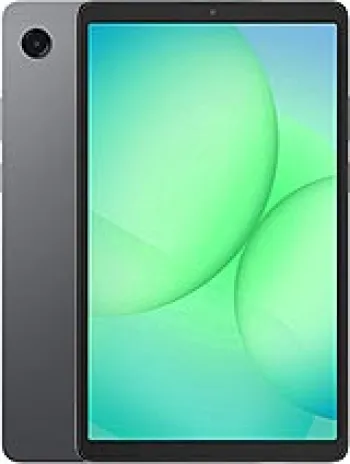
Overview of Samsung E610
The Samsung E610 is a feature phone that was unveiled in the first quarter of 2004 and discontinued thereafter. This mobile device was targeted primarily at users who needed a simple and functional device with essential communication features. With its compact design and primary functionalities, it was an attractive option in its time for those who sought reliability in basic mobile phone operations.
Design and Build Quality
The Samsung E610 is designed to be a lightweight and compact device, weighing just 84 grams (2.96 oz). It fits comfortably in the palm of the hand, with dimensions of 85 x 49.5 x 19.8 mm (3.35 x 1.95 x 0.78 in). The use of plastic materials contributed to both the weight reduction and overall durability, allowing users to handle the phone without fear of easily damaging it. The device was available in black, blue, and red, which offered a touch of variety for users interested in color choices.
Display
The Samsung E610 features a TFT display capable of showing 256K colors, which was impressive for a feature phone of its time. With a resolution of 176 x 220 pixels, the screen was made to accommodate basic visual tasks, such as viewing photos and navigating through the phone's interface. Despite being modest in size, the display served its purpose for simple operations without any additional frills.
Camera
Equipped with a VGA single camera, the Samsung E610 provides basic photographic capabilities suitable for capturing low-resolution images. Although it cannot record videos, it does come with an LED flash feature, which assists in taking photos in lower lighting conditions. Given the limited technology at the time, the camera was primarily intended for casual use rather than professional-grade photography.
Battery Life
A removable Li-Ion 800 mAh battery powers the Samsung E610, offering a standby time of up to 190 hours and a talk time of up to 3 hours and 30 minutes. The battery life is adequate for a device that focuses on calls and messaging, ensuring users remain connected throughout their day without frequent recharging.
Network and Connectivity
The Samsung E610 supports GSM technology and operates on the 900 / 1800 / 1900 bands. The device offers Class 10 GPRS, allowing for basic data transfer capabilities, although it does not support EDGE. While there are no Bluetooth, WLAN, or positioning features available, the phone does offer infrared connectivity, a useful tool for transferring data between compatible devices. The lack of a USB port and radio underscores its primary function as a communication device.
Sound and Audio
Sound-wise, the Samsung E610 does not include a loudspeaker or a 3.5mm headphone jack, which might limit its appeal to users desiring robust audio capabilities. However, the phone supports vibration alerts and downloadable polyphonic ringtones, allowing users to customize their alert preferences.
Memory and Storage
The phone book on the Samsung E610 can store up to 2000 entries with contact groups functionality and photo call features. Call records on the device can log up to 20 dialed, 20 received, and 20 missed calls. However, the phone lacks a card slot, limiting expandable memory options and relying entirely on built-in storage for contact data and basic software needs.
Software Features
The Samsung E610 runs a feature phone operating system without an intricate app ecosystem, focusing on core features like messaging, which includes SMS, EMS, and MMS support. The WAP 2.0/xHTML browser allows for basic web browsing. The phone also includes four Java-based games: BubbleSmile, Fun2Link, Ultimate Golf, and Mobile Chess, providing simple entertainment options for users.
Conclusion
Overall, the Samsung E610 served as a pragmatic choice for users in need of a dependable feature phone back in its time. Its main strengths were in its compact and sturdy design, basic communication capabilities, and ease of use. Its limitations, typical of many feature phones, such as limited connectivity options and lack of extensive multimedia features, marked it as a device intended for simple, everyday use rather than as a centerpiece of digital connectivity.
Key Features of Samsung E610
- Compact and lightweight design with dimensions of 85 x 49.5 x 19.8 mm and weighing only 84 g.
- TFT display with 256K colors offering a resolution of 176 x 220 pixels.
- Supports GSM frequencies: 900 / 1800 / 1900.
- GPRS Class 10 for basic data services.
- Large phonebook capacity with 2000 entries, including contact groups and photo call feature.
- VGA main camera with LED flash for simple photography needs.
- Infrared port available for data exchange.
- Removable Li-Ion 800 mAh battery providing up to 190 hours of standby time and up to 3 hours and 30 minutes of talk time.
- Customizable with downloadable polyphonic ringtones.
- Pre-installed games including BubbleSmile, Fun2Link, Ultimate Golf, and Mobile Chess.
- Supports SMS, EMS, and MMS messaging.
- WAP 2.0/xHTML browser for basic internet access.
- Available in three colors: Black, Blue, and Red.
Samsung E610 Drawbacks
- Legacy GSM technology without support for more modern networks like 3G or 4G.
- No EDGE support, limiting the data speed capabilities.
- The device is discontinued, which might affect service and repair options.
- Lacks a large display, with no size specification mentioned.
- No memory card slot, limiting expandable storage options.
- VGA main camera without video recording capabilities.
- Absence of a selfie camera.
- No loudspeaker feature, which impacts usability for hands-free communication.
- No 3.5mm headphone jack, which restricts audio output options.
- Lack of modern connectivity options like Bluetooth and WLAN.
- No GPS positioning feature available.
- The device does not support radio features.
- No USB connectivity specified, which may affect data transfer capabilities.
- Short battery life with only up to 3 hours and 30 minutes of talk time.

View Also
More Phones
All Rights Reserved +14266 Phones © Mobilawy 2025

























